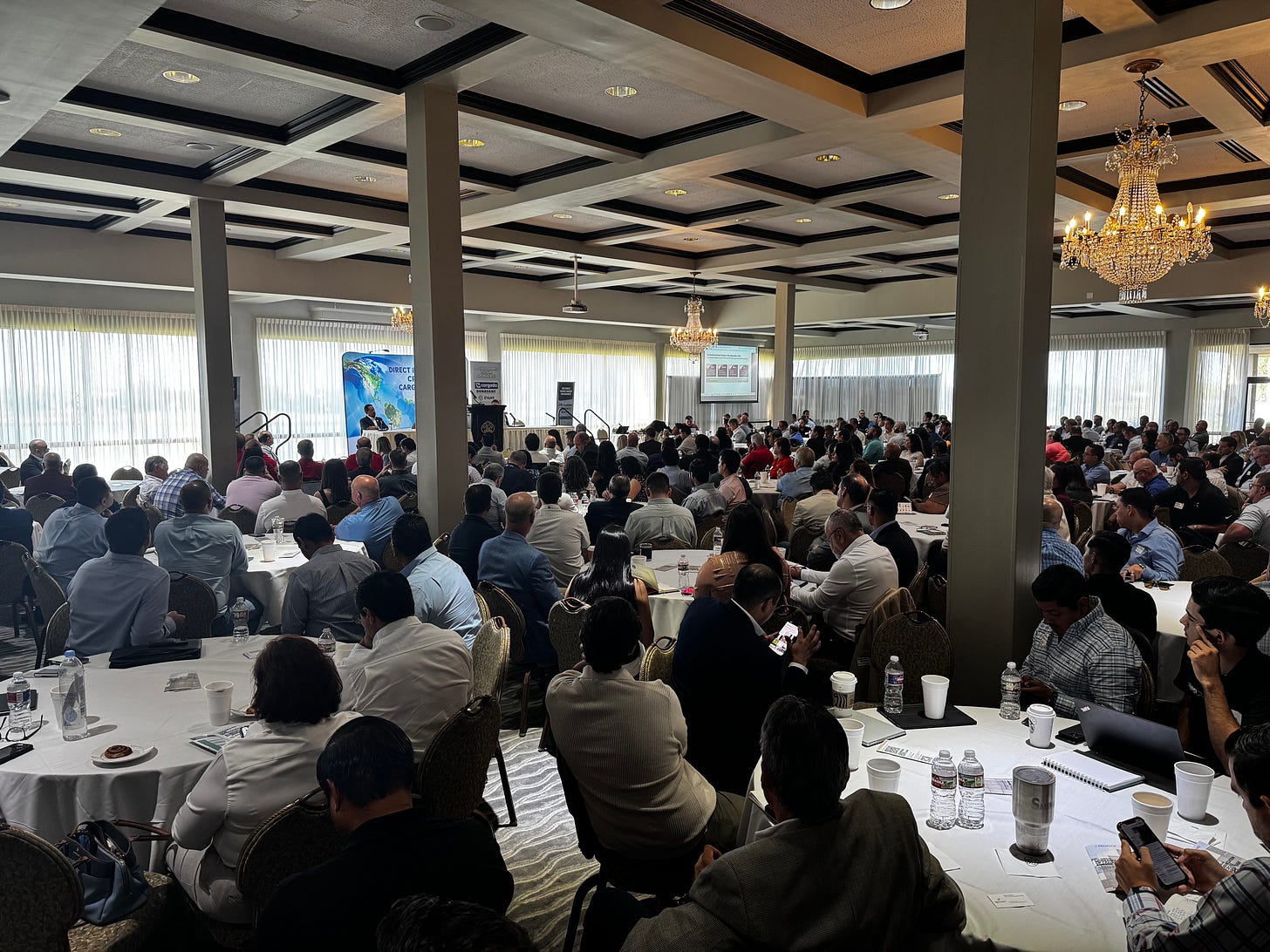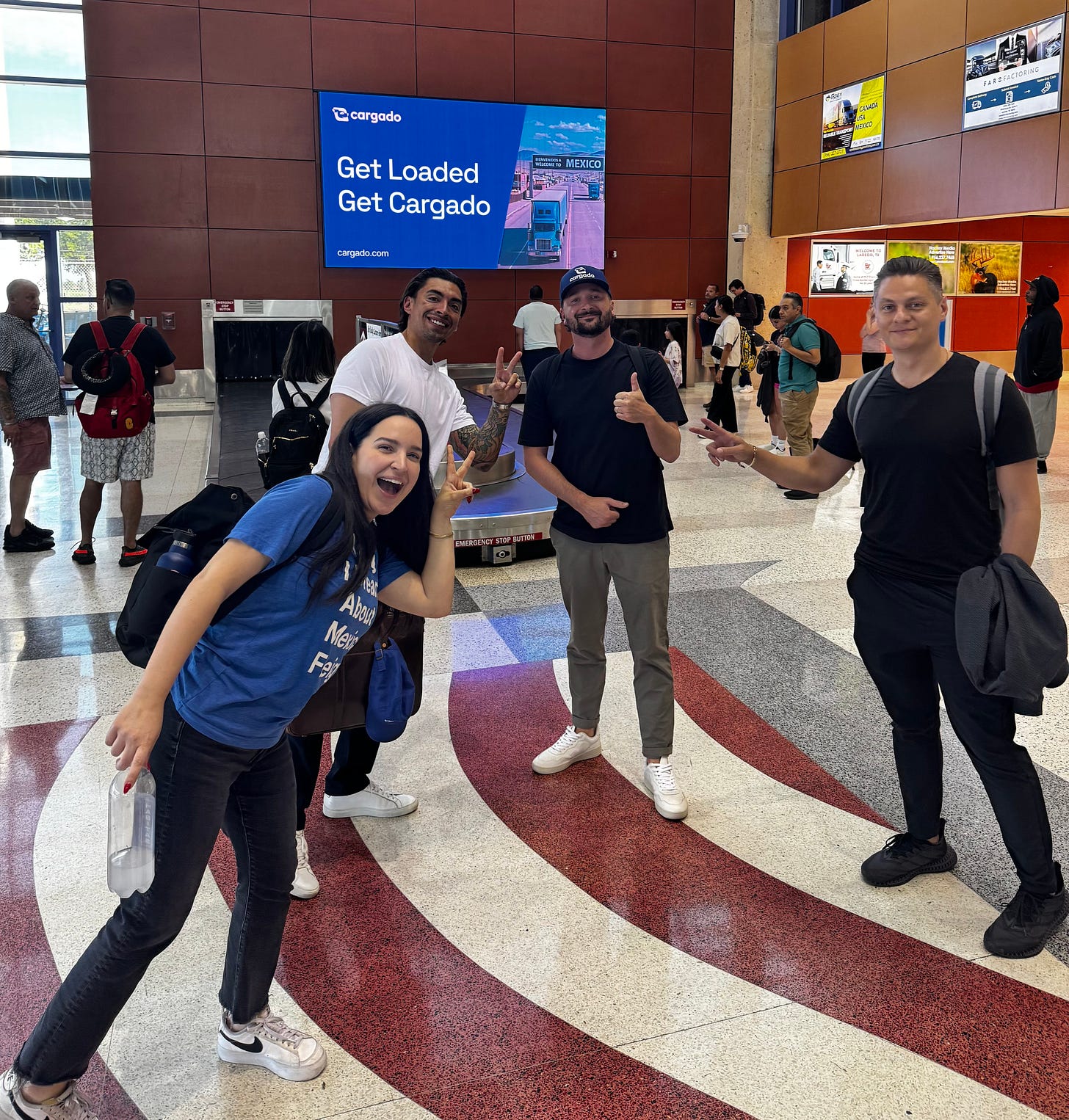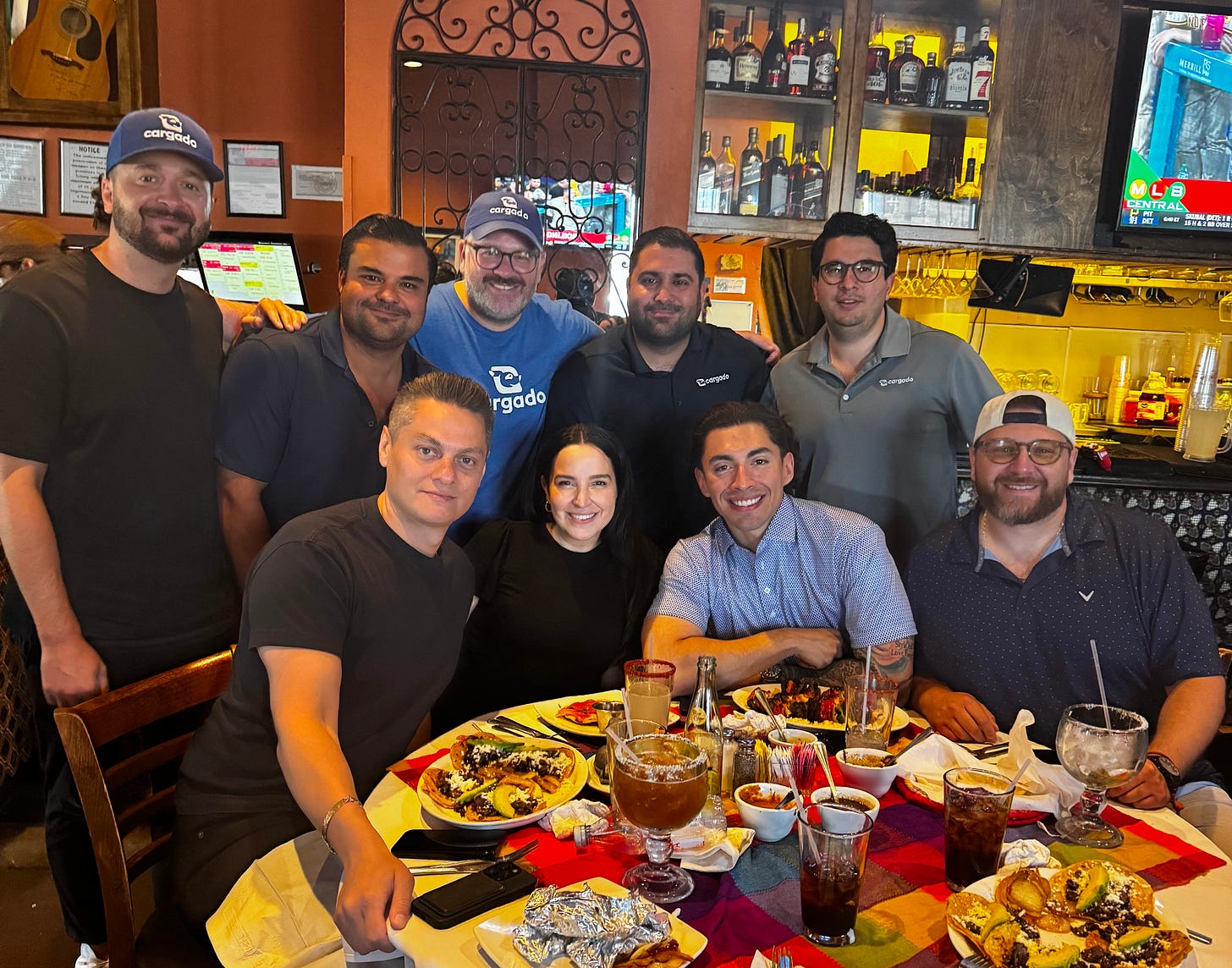Issue #59: Takeaways from the 8th Annual Modernization of Cross-Border Trade
A tactical recap of what we covered in Laredo—and the advice I’d give any broker trying to win in Mexico freight right now.
Last week I had the privilege of moderating a panel at the 8th Annual Reliance Partners Modernization of Cross-Border Trade event in Laredo—and I can’t say this enough: if you care about cross-border freight, you need to be at this event next year.
It wasn’t one of those polished but generic conferences. It was freight-forward. Candid. Tactical. Real.
I was joined by three friends and heavy hitters in the space:
Johnny Curiel from J.B. Hunt, who’s built cross-border at one of the largest transportation companies in North America.
Patty Hinojosa from CargoQuotes, who leads one of the most efficient cross-border operations in the brokerage world today.
Troy Ryley from Echo Global Logistics, who probably needs no intro if you’ve done anything cross-border in the last decade.
The four of us sat down with an audience full of freight brokers and trucking companies—people already in the Mexico game or looking to enter it—and had an honest conversation about what works, what doesn’t, and how to actually succeed in cross-border freight.
We didn’t talk about forms or customs paperwork. We focused on the real stuff.
And now I want to break down the five biggest themes that came out of the session, plus a few of my own thoughts layered on top.
Getting Started in Mexico Freight Is Easier Than People Think — If You Focus
Let’s be honest: Mexico freight feels intimidating from the outside. Brokers hear “customs,” “transloading,” “bonded carriers,” and suddenly it feels like international forwarding—not something you can quote confidently or scale.
But here’s the truth: if you’re being asked about Mexico freight, you’re already behind.
Your customers aren’t asking because they’re curious. They’re asking because they need help. And if you pass it off to someone else or slow-play it internally, you’re handing that customer to another broker who will figure it out.
What the panel made clear is this: you don’t need to build a fully staffed cross-border division to get started. You don’t need a Monterrey office. You don’t need a customs broker on payroll. You don’t need to spend six months getting “ready.”
You need:
A few repeatable lanes to test with
One person internally who can own it
A vetted carrier partner
And ideally, a platform that actually understands Mexico freight
My take: The biggest thing that separates the winners from the tourists in Mexico is focus. You don’t half-do Mexico. You pick your lanes, you show up for your carriers, and you learn how the freight actually moves. Lane by lane. Handoff by handoff. That’s how you build muscle.
Picking the Right Partners Makes or Breaks You
This was a major theme: brokers and carriers that succeed in Mexico are the ones who invest in the right relationships—especially with carriers south of the border.
You can’t treat a Mexico-side carrier like a U.S. contract carrier. The expectations are different. The risk tolerance is different. The communication cadence is different.
As Patty put it: “You’re not just moving freight—you’re building trust across three parties in two countries.”
What brokers don’t always realize:
Most Mexican carriers don’t carry U.S.-style cargo insurance
WhatsApp is the dominant communication tool
The same MX-side carriers won’t necessarily be available for your 2,500-mile lane to Toronto versus your 300-mile move to Laredo
And here’s what happens when you choose the wrong partner:
Shipments get delayed at the border
You lose visibility for hours (or days)
Your customer calls you asking where the truck is, and you have no good answer
My take: When we built Forager, I saw firsthand how fragile trust can be in cross-border. One bad load can cost you months of relationship-building. So if you’re a U.S. broker, slow down the carrier onboarding process. Ask around. Look for CTPAT certification if it’s available. And don’t forget—your carrier is your reputation on the Mexico side.
The Border Handoff Is the Most Misunderstood (and Underrated) Piece
There’s a magical moment in every cross-border move that either makes it or breaks it: the transfer at the border.
That transfer might involve:
A U.S. carrier dropping at a yard in Laredo or El Paso
A drayage or transfer carrier physically taking the trailer across the bridge
A Mexico carrier picking up and completing the linehaul on the other side
Or it might involve a single through-trailer carrier with interchange agreements or B-1 drivers. There are a dozen ways to structure it—and most brokers don’t understand half of them.
We talked about this on the panel, and Troy emphasized something important: “It’s not just about who owns what leg. It’s about who owns the communication during the handoff.”
That’s where loads go dark. That’s where loads get stuck. That’s where brokers lose trust.
My take: There’s no one right way to structure a cross-border move—but there is one universal truth: you need to clarify ownership. Who’s responsible for what, and when? If that’s not clear in your SOPs, you’re setting yourself up for failure.
A surprising number of brokers have never even asked their carrier how the transfer works. That’s freight malpractice. Pick up the phone. Ask the question.
You Don’t Need a Mexico Office (Yet), But You Do Need a Mexico Plan
This question came from the audience and got everyone nodding: Do I need a team in Mexico to be good at Mexico freight?
Here’s the answer, and it’s freeing: you don’t need a Mexico office on Day 1.
But you do need a real plan.
That means:
Someone on your team owns cross-border
They’re bilingual or at least carrier-literate
You have processes in place to cover freight, track it, and escalate issues
You know who your partners are in Laredo, El Paso, McAllen, and beyond
Too many brokerages try to “test” Mexico with no one responsible for making it work. That’s like assigning five percent of someone’s time to stand up your most complex mode.
My take: Eventually, you might want boots on the ground. In Monterrey. Or at the border. Or in Mexico City if your freight takes you further south. But you earn the right to open that office by proving there’s real volume—and that you can move it cleanly.
Start with coverage. Prove you can build trust. Then scale.
The Most Underrated Way to Win: Know Which Lanes to Target
This one deserves more airtime, because most brokers screw it up.
They hear “Mexico” and start quoting random spot freight from Guadalajara to Atlanta. But that’s a recipe for frustration.
Here’s the smarter approach:
Start with repeatable lanes picking up in Monterrey, Juarez, Tijuana, and Reynosa—the four pillars of Mexico’s export engine. These cities are dense with manufacturing. They’re well-connected. They’ve got a reliable carrier base. And they’ve been sending trucks to the U.S. every day for decades.
Then:
Map those lanes to your U.S. customer base
Focus on direct, high-frequency corridors—Reynosa to Dallas, Juarez to Phoenix, Tijuana to San Diego, Monterrey to Laredo or Chicago
Learn what a good rate looks like. Learn what an on-time pickup looks like. Learn what the carrier base expects
Freight from Mexico City to Kansas City is very different from freight from Reynosa to Houston. The infrastructure is different. The risk profile is different. And so is the margin potential.
My take: If you’re a broker trying to break in, pick one market and dominate it. Learn the rhythm. Learn the players. Learn what goes wrong. That’s how you build a defensible book. And that’s how you avoid wasting six months on freight that was never winnable to begin with.
Final Thoughts
This event in Laredo was a perfect reminder of something I think we all forget from time to time: freight is still a people business.
The technology’s better. The data’s better. The integrations are tighter. But at the end of the day, the difference between a load that moves and a load that sits is still usually who you know and how you work.
Huge thanks again to:
Johnny Curiel, for bringing deep strategic perspective from the J.B. Hunt playbook
Patty Hinojosa, for showing what agile cross-border execution actually looks like
Troy Ryley, for grounding the panel in experience and clear-eyed honesty
And to Reliance Partners, for pulling together the kind of event the industry really needs more of
If you’re a broker or carrier trying to figure out Mexico in 2025, this is the time to go all in. Tariffs, nearshoring, customer demand—it’s all converging. And the brokers who win will be the ones who learn faster than everyone else.
Want more freight-nerdy insights like this in your inbox?
Subscribe to my newsletter at CongratsOnAllTheProgress.com.
We talk cross-border freight, nearshoring trends, freight tech, and how to actually build something useful in this space.





